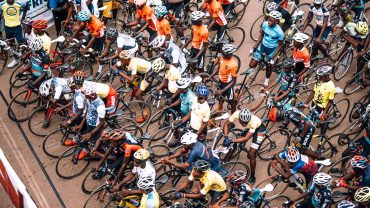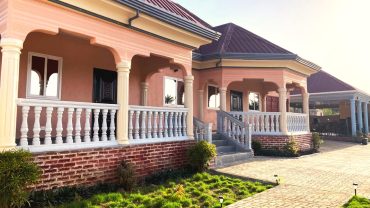Paddle down the mirror-calm Kabba River, get up close to majestic hippos and hike the wildlife-filled trails of Sierra Leone’s first National Park.
Over the coming weeks, VSL Travel (Visit Sierra Leone) is touring the country to set up new day trips, short-breaks and tours for you to enjoy come the dry season. We’re on a mission to make it as easy as possible for everyone – Sierra Leoneans, ex-pats and those visiting Sierra Leone for the first time – to explore our beautiful country, get to know our people, immerse yourselves in our culture and soak up our white-sand beaches, rare wildlife and enormously varied landscapes.
It’s sometimes easy to get caught up in a Freetown bubble, venturing mainly to the (admittedly stunning) Peninsula beaches. But there’s so much more to Sierra Leone. And you know what? The roads are now so much better than they were, with an increasing proportion of major routes tarmacked or graded, making travel ‘up-line’ much easier – and less painful on the back!
Outamba-Kilimi National Park
The first stop on our tour? Bombali district, and Outamba-Kilimi National Park, a 6 to 6.5-hour journey from Freetown via Makeni and Kamakwie.
Reached in the immediate vicinity by the remarkable Kabba Ferry – a floating pontoon incongruously attached to steel cabling that is used to pull you, and your vehicle, across the river in an adventure of itself for Le5,000 (US$0.70) – Outamba-Kilimi National Park (OKNP) is Sierra Leone’s first National Park.
Most famous for its hippos, OKNP is a truly off-grid experience, with no phone signal for a good 10km and very little human or mechanical activity of any kind.
But quiet it is not, bursting instead with the sights and sounds of wildlife and nature: the crashing and swooping of monkeys swinging between the trees, the gentle rhythm of plentiful birds singing their songs, the incessant hum of crickets and the night-time croaking of amphibious life accompany you wherever you are in OKNP – including in the picturesque setting of the camp, next to the Kabba (Little Scarcies) River.
Get up close to hippos
The highlight is the hippos. From camp, a round-trip at dawn or dusk of between one and 2.5 hours along the River (dependant on the point the hippos have chosen to rest) will bring you near-guaranteed sighting of a pod of around 20 of these majestic animals.
Drawing up 20-30 metres away from hippos in a canoe is unique, unnerving and exhilarating, with their splashes, grunts and snorts reverberating around the stillness of the water. The assurance of the local guide is that, contrary to popular belief, hippos are mostly docile in the river. However, it’s hard to shake a feeling of nervous trepidation, having no idea where the beasts will pop up next as they surface, duck under and re-surface- potentially metres from your canoe.
Take an extended canoe trip down the river
Hippos or no hippos, the journey along the river is, itself, magical, with an extended guided canoe trip (up to a day-long) an option for any stay at OKNP. Reflections of monkeys swinging between overhanging trees, the sight of birds perched on rocky outcrops mid-river, butterflies fluttering past and the chirpings of nature accompany any paddle downstream. Fish are abundant, with a fishing line another option for whiling the time away. In stark contrast to Freetown, there is no ‘dirty’ (trash) in sight.
Nine primate species and around 150 species of birds grace the surrounding rainforest, including the rare Pallid Harrier migrant. On the river, watch in particular for the huge nests of the selfless Hamerkop bird in forks of overhanging trees. These nests are sometimes over 1.5 metres in length, decorated with bright-coloured objects and happily accommodating – and protecting – the nests of smaller birds, such as weavers, on the outside.
Hike Karangia Hill
A hike is another must-do in OKNP. The short option is to cross the river and take the two-hour guided round-trip up and down Karangia Hill. This is best done at dawn, to catch sight of birds, monkeys and other wildlife before they take shade in the heat of day.
Dawn also brings a simply spectacular sunrise at the peak, when rays of light illuminate the mist-clad rainforest and grasslands of OKNP as Mt Outamba and the Kuru Hills – that mark the border with Guinea – slowly come into full-view. A great spot for meditation and contemplation, the meaning of Karangia Hill, ‘The Hill of Learning’ is wholly appropriate.
Learn about conservation efforts
Education of the importance of the conservation of OKNP is, however, a battle that the Park Rangers are only partly winning. On their account, the illegal mining, logging and hunting that plagued OKNP post-civil war is largely under-control, thanks to regular patrols.
Bushfires, typically originating from nearby brushing done without control perimeters, are another matter. Stunningly beautiful it remains, the destruction wrought by bushfires is only too evident at times on the walk to Karangia Hill, with partially burnt trees not uncommon and grass considerably lower than the expected head-height, leaving a fleeting feeling of wonder at what the forest would be without such interference. As Mohamed Mansaray, a Park Ranger, bluntly put it in appealing for more resource to increase patrol numbers and to educate on bushfires, ‘without forest, no animal; without animal, no human’.
Venture deep into the rainforest in search of elephants
Untouched jungle is, however, very much in abundance just slightly deeper into the vast c.1,000km2 of OKNP. Instead of heading back to camp from Karangia Hill, you can opt to extend your hike for an hour… or five… deep into rainforest along the Gongollo and Maffaie Trails, or even by several days through camping overnight in the bush.
A multi-day trek is essential if you plan to try and catch sight of the famous- if elusive- elephants that maraud through parts of OKNP, coming closer to the camp only during rainy season when the grass shoots are higher. More common sightings are ‘bush cows’ (buffalo), bush pigs, bushbuck, duikers, chimpanzees, a host of monkeys and remarkable Disney-esque termite ‘castles’. Rumour has it these are constructed by local devils, a perennial ‘thank you’ for the termites’ role in weakening the cane that held up King Solomon after his death. A two-day trek can take you to the cascading waters of the Yomba Falls, one of the largest and most impressive waterfalls in Sierra Leone.
Whether or not you manage to glimpse the rare elephants, these hikes offer an opportunity to truly explore untouched nature, battling your way through head-high grasses, with cutlass in hand, and 50m-high canopies of Cotton and Kola trees towering above you. An experience you will never forget.
Accommodation @ OKNP
While current facilities at OKNP are basic, with no electricity, drop-toilets and water provided only from the river, the timber huts that make up sleeping quarters do have a certain rustic charm that blends into the surrounding rainforest. Staff keep the huts exceptionally clean, with each bed having its own mosquito net. You can’t beat the view of the river as you emerge from your hut bleary-eyed first thing in the morning.
Development is also in the air. Two new huts with raffia-clad interiors and shaded verandas recently have been built, as has a wash station with running water and flush toilets. All are due to open in November 2016, along with a vast research centre, which offers the potential for retreats.
Staff can cook local food for you during your stay, but bringing your own is often a better option (with cooking facilities and utensils provided, but not plates and cutlery). Definitely bring your own drinking water.
Accommodation @ Safari Village
If you do prefer something a little more luxurious you can stay just outside OKNP in comfortable huts at Safari Village near the Kabba Ferry. Safari Village is owned by the local Chief, who is also engaged in the somewhat surreal project of building a replica ‘White House’ guest house in nearby Kamakwie (a potential overnight en route) and can organise quad biking tours to local villages and artisanal mines.
Local knowledge
For one-day each year Kamakwie erupts into festival-frenzy. On Independence Day, 27th April, Kamakwie opens its doors to the world with ‘Maambena Fest’. Organised by the inspiring international storyteller Usifu Jalloh, Maambena revives and celebrates local culture, education, music, dance and drama, aiming to draw local communities together as one.






Comment (0)